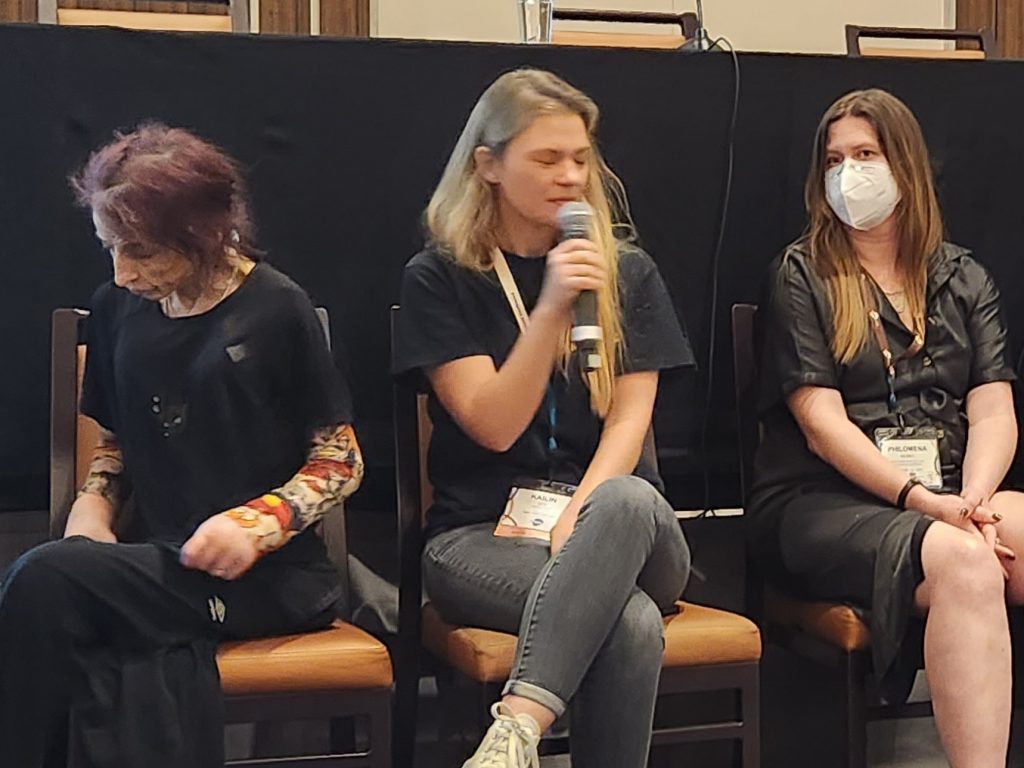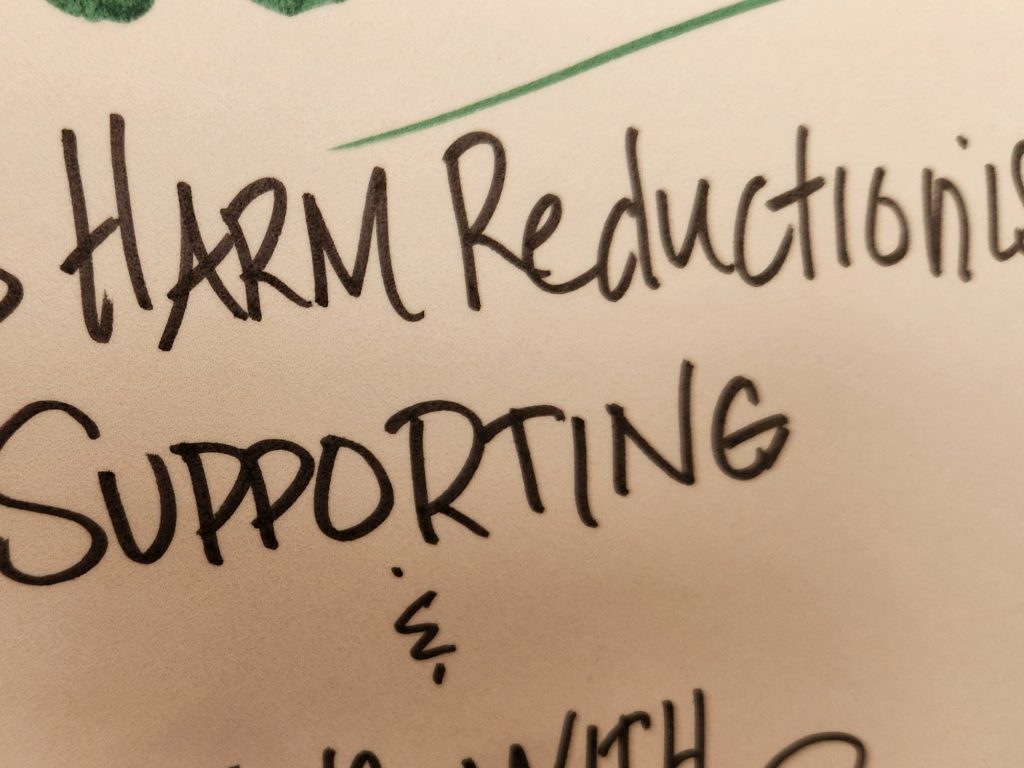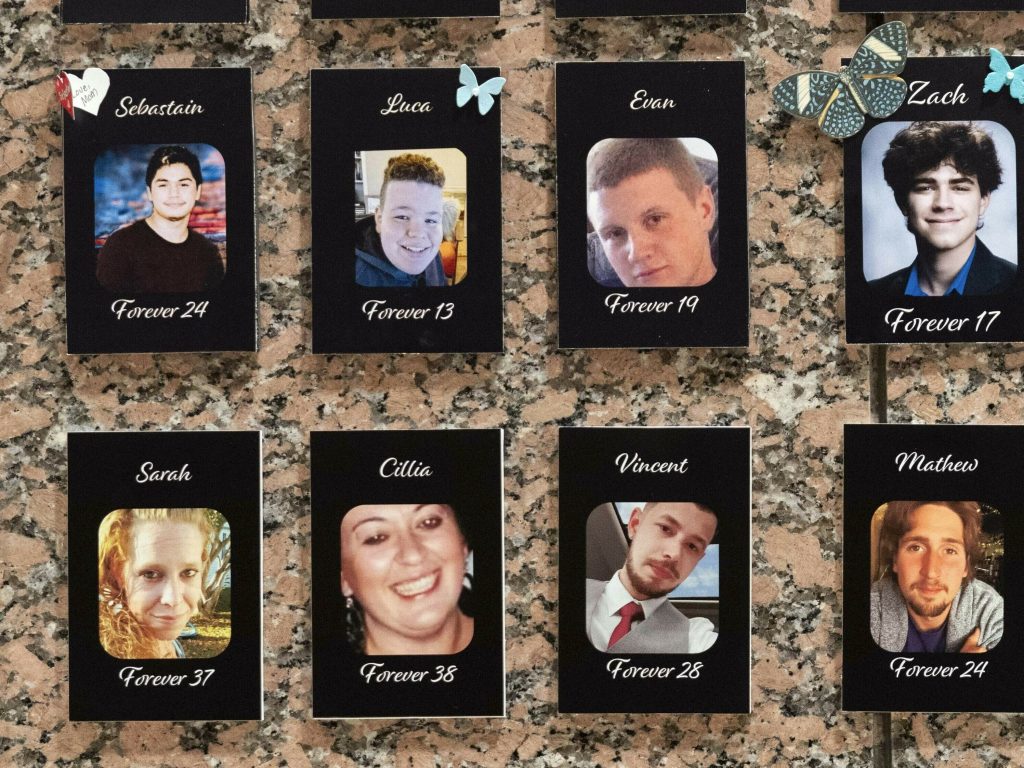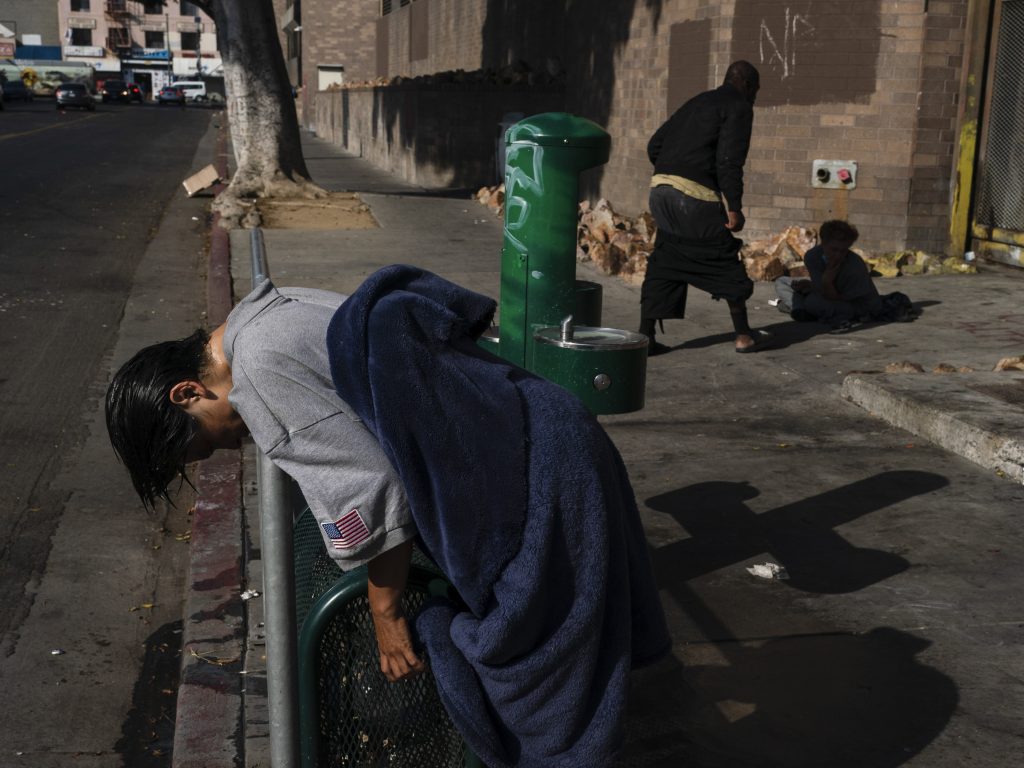News
One woman’s controversial fight to make America accept drug users for who they are
By: Brian Mann | NPR
Posted on:
When Louise Vincent was introduced at a drug policy conference last month in Phoenix, the huge crowd erupted in applause.
She’s a small woman, rail thin. At age 47, her face is weathered by what she describes as a hard life.
It’s grown harder in recent years, after drug cartels began pushing deadlier drugs into U.S. communities, including fentanyl and the veterinary drug xylazine.
“We saw the drug supply turn upside down,” Vincent told the crowd. “It’s toxic.”
In interviews with NPR, Vincent said she herself began using drugs at age 13 and has never been able to live sober long-term. “What they told me was if I couldn’t get [off drugs], I wasn’t doing something right, and that’s not true,” she said.
Vincent points to research showing that abstinence-focused approaches to recovery don’t work for many people who experience addiction.
Her own ideas are controversial and face serious opposition from many U.S. politicians. Many Democrats and Republicans want tougher laws and longer prison sentences to combat fentanyl.
But Vincent has emerged as one of the leading voices in the U.S. pushing to humanize and rally help for drug users, like herself, even when they’re not yet willing or able to live sober.
“We have made it OK to abandon people who use drugs. We tell an entire group of people it’s OK if they die,” she said.
With total drug deaths in the U.S. now topping 112,000 fatalities a year, she argues the U.S. focus on law enforcement and drug abstinence hasn’t worked and it’s time to try something new.
“We’ve had the real push for abstinence for how many years now?” Vincent said. “And where have we gotten?”
A philosophy of “harm reduction” born on the streets
Vincent’s own addiction started early in North Carolina. From the start, she said people told her she was valueless, a junkie, a criminal and a zombie.
“I felt like I didn’t belong anywhere,” she said. “It’s devastating.”
According to Vincent, this kind of stigma, rejection and isolation deepens the cycle of addiction and self-destructive behavior that leaves people like herself vulnerable.
The illegal drug supply has only gotten more dangerous since Vincent began using. A few years ago, before public health warnings were issued about the dangers of xylazine being mixed into fentanyl, Vincent used a dose of the chemical cocktail.
It left her with wounds that still haven’t healed. “It has eaten the skin off my entire arm,” she said. “I can’t even talk about it without crying.”
This part is hard for many Americans to understand. If drug use is so harmful, why don’t thoughtful people like Louise Vincent simply stop?
Research shows addiction doesn’t work like that.
It’s complex, hard to beat, tangled up in everything from mental illness and trauma to poverty and homelessness.
Federal researchers say roughly 27.2 million Americans experience some kind of drug addiction. Roughly 5 million to 6 million people in the U.S. misuse opioids every year.
Opioids like fentanyl and heroin are especially difficult to escape. Relapses are common.
Most experts agree the U.S. has failed to create the kind of health care system needed to help more people recover.
Vincent’s argument — laid out at conferences and public appearances — is that the U.S. needs to reinvent addiction care by treating drug users with dignity, helping them avoid the worst outcomes.
The addiction strategies Vincent supports include:
- giving drug users basic healthcare and access to clean needles and other supplies that are proven to reduce disease such as HIV-AIDS and Hepatitis C
- making medical treatments for opioid addiction, like methadone and buprenorphine, far more accessible and affordable
- when street drug use threatens to disrupt neighborhoods, responding with affordable housing, counseling and other supports, not more arrests.
“Let me just say, I didn’t start doing harm reduction because I wanted to save the world,” she said. “I wanted to save myself. I need a family. I didn’t want to feel rejected anymore.”
Bringing drug users out of the shadows
Vincent was one of the first activists in the U.S. to put many of these ideas into practice, offering active drug users services and care out in the open.
She created the Urban Survivors Union, a space in downtown Greensboro, N.C. Drug users who come here don’t have to hide their addiction. They can get a meal or a cup of coffee.
“It was a total mess, and we have worked really hard to turn it into a cozy, warm place,” she said, while giving NPR a tour of the facility.
Staff are available to guide people toward social service programs or treatment. There’s equipment available to test street drugs for high-risk chemicals such as fentanyl and xylazine.
“We’re creating a wound room for xylazine wounds that people are coming in with,” Vincent said.
She compares this grassroots effort — humanizing and bringing drug users into the open — to the fight for LGBTQ acceptance during the 1990s. The stigma and death surrounding addiction during the fentanyl crisis, she says, mirror the early years of the HIV-AIDs epidemic.
“We’ve had an entire community swept away. I can’t even think of all the people I know who’ve died,” she said.
“I mean so many people have died. My daughter died. Our mentors are dead. I can barely stand to be here sometimes because of all the trauma and all the people that we’ve lost.”
Many drug policy experts in government, academia and addiction treatment — including the American Medical Association and the American Society of Addiction Medicine — have come to share Vincent’s belief that the current U.S. approach to the drug crisis has failed.
The AMA and ASAM have endorsed the idea of providing safe drug consumption sites as a strategy to reduce fatal overdoses, as Canada, Portugal and other nations have done, but so far only two such sites operate openly in the U.S., both in New York City.
“It’s so dangerous right now, and there are some answers and some things that work that we just downright refuse to implement,” Vincent said.
A “harm reduction” backlash as public anger over drug use grows
Many politicians are moving in the opposite direction. Responding to homeless camps and open-air drug markets, some Democrats and Republicans have backed tougher drug laws for fentanyl like those passed during the crack cocaine epidemic.
Vincent fears this backlash will force more people like herself underground, making them even more vulnerable to overdose.
“They are now saying arrest, arrest, arrest, arrest,” she said. “Nobody is going to talk about their drug use that’s not already out.”
Vincent says she’ll keep fighting for the idea that drug users around the U.S. deserve acceptance and places, like her drug-users union, where they can go to feel welcome and safe.
“I think it’s everything. We built this and we did it underground when it was illegal,” she said. “I’ll do it illegally again. I believe that people who use drugs deserve to be treated with dignity and respect.”
But with fentanyl deaths still rising and many politicians promising an even tougher response, Vincent acknowledges that her vision of drug users gaining acceptance and care in the U.S. still feels a long way off.
April Laissle, host and reporter at NPR member station WFDD in North Carolina, contributed reporting to this story
9(MDU1ODUxOTA3MDE2MDQwNjY2NjEyM2Q3ZA000))





